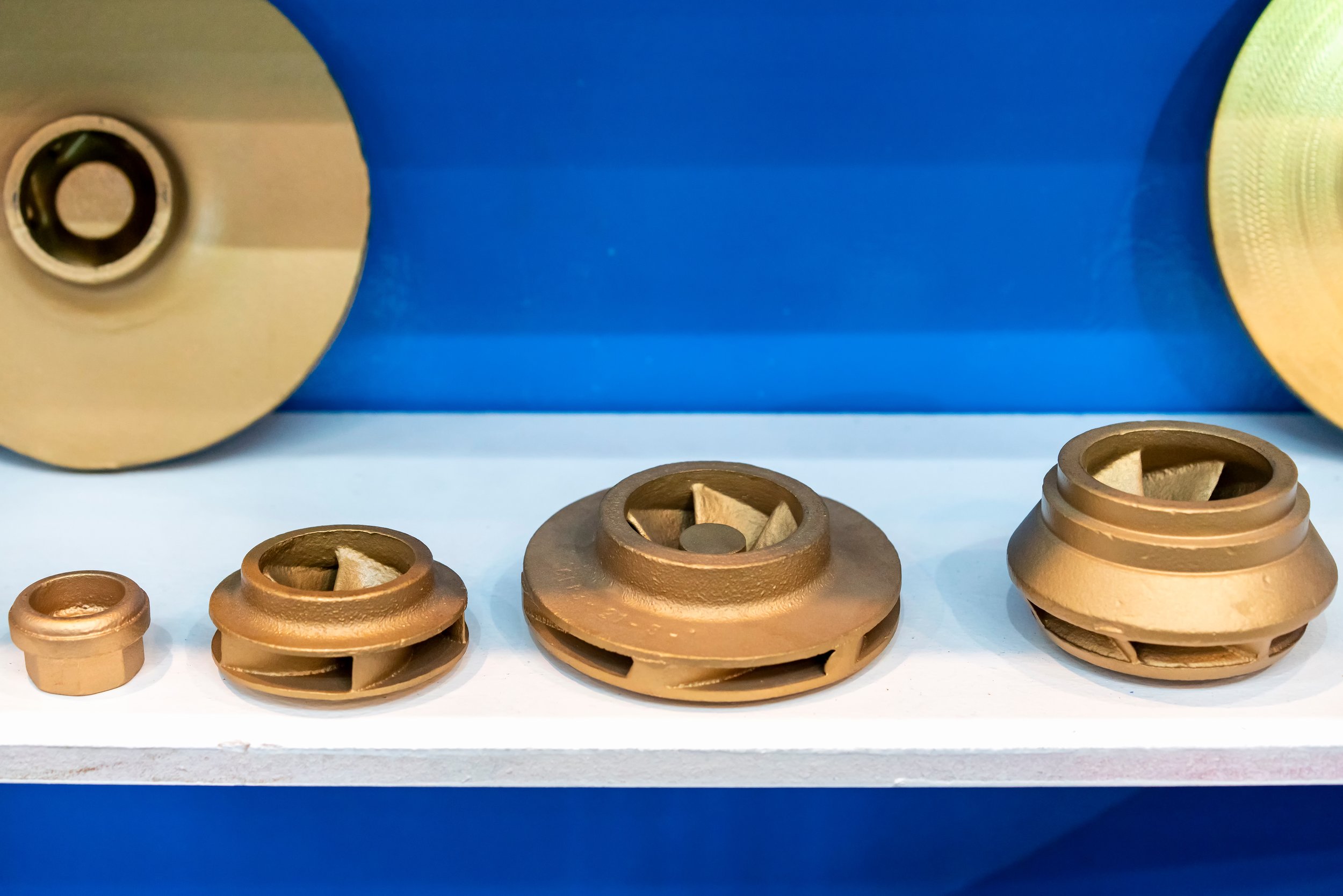Pump Optimization with Large Impellers Part 1: Why Bigger Really Can Be Better
/By Mark Bingham
Variable speed drives (VSDs) are less expensive and more reliable than a decade ago, paving the way for new best practices when specifying pumps. Traditionally, pumps have been specified with impellers trimmed to deliver peak load without overloading the pump motor. But is all that trimming necessary now that VSDs can reliably vary flow across the entire operating range of a pump?
It may surprise many that trimming the diameter of an impeller decreases a pump’s efficiency. The extra clearance between the impeller and volute creates more internal recirculation and turbulence, resulting in efficiency losses. There are times when trimming an impeller may be the most affordable solution, such as when an installed pump is found to be oversized. However, there are many reasons to select a maximum-sized impeller for a new variable-speed pump application. A quick review of the pump affinity laws is an excellent place to start.
Pump Affinity Laws
The pump affinity laws define the mathematical relationship between pump impeller diameter or speed and flow, total head, and power consumption. These formulas predict the impact of change in pump impeller diameter or speed (RPM) on the pump head, pump flow, and brake horsepower (BHP) of the pump in a closed system. They are defined as follows:
Volume capacity - Pump GPM capacity varies DIRECTLY as the speed (RPM) or impeller diameter ratio change.
q₁ / q₂ = (n₁ / n₂ ) (d₁ / d₂ ) eq. 1
Head or Pressure - Total pump head varies directly as the SQUARE of the speed (RPM) or impeller ratio change.
dp₁ / dp₂ = (n₁ / n₂ )² (d₁ / d₂ )² eq. 2
Power - BHP varies directly as the CUBE of the speed (RPM) or impeller diameter ratio change.
P₁ / P₂ = (n₁ / n₂ )³ (d₁ / d₂ )³ eq. 3
The calculations used to determine impeller trim are based on these laws. They provide a reasonable approximation of how a pump’s flow, head, and power will change with changes in speed or impeller diameter. However, the affinity laws assume that efficiency remains constant as impeller sizes change. Actual pump curves, based on laborious manufacturer testing, reveal a different story.
Overlooked Efficiency Losses of Trimmed Impellers
You’ve probably noticed on pump curves that a pump’s best efficiency point (BEP) always occurs where the impeller is full-sized. As we trim the impeller, the operating efficiency of the pump decreases. Since trimming is irreversible, engineers tend to be conservative when it comes to reducing impeller size. If the trimmed diameter still produces excess head, the pump must be throttled to consume the excess energy. The resulting energy penalty is in addition to the inefficiencies introduced by impeller trimming.
Equation 1 above indicates that changing pump speed with a VFD yields the same performance changes you would see on a pump if you were able to instantly change the impeller size with changes in demand. However, changing operating points with VFDs are not subject to the same decreases in efficiency that result from reduction in impeller diameter.
Large Impeller and VFD Maximize Efficiency
A full-size impeller, combined with a VFD, allows for infinite flow and head combinations within the boundaries of the variable speed pump curve without the progressive losses in pump efficiency associated with trimming the impeller.
As an example, let’s say we need a pump to operate at 500 gpm at 65 feet.
A constant speed e15103BD with the impeller trimmed to 8.875” to meet the duty point has an efficiency of 82.8%.
An optimized e15103BD with an 9.5” impeller operating at 1620 rpm results in an efficiency of 84.7%.
Notable Advantages
There are other advantages to specifying pumps with large-size impellers besides efficiency.
Faster delivery times. Trimming impellers is a time-consuming process that requires specialized labor, which is increasingly hard to find. Specifying pumps with full-size impellers is a great way to keep jobs on a fast track. JMP is even in the process of building a ready stock of 33 e-1510 and 16 e-80 models with optimally sized impellers.
Extra capacity. A variable speed pump with a large impeller gives the owner extra capacity should there be future expansion, or a system pressure drop that is greater than expected.
No extra cost. Of course, the most outstanding advantage is the lifecycle efficiency engineers can deliver to their clients—at no extra charge. This type of optimized pump selection can improve pump efficiency by 1/4 to 2%, which can significantly reduce the total lifecycle cost of the pump.
More to Come
This blog briefly overviews the principles behind what JMP now refers to as “Optimized Pump Selection.” Subsequent blogs will discuss the finer details of this type of pump specification. This is a new concept for many, so please feel free to ask questions or leave comments and we’ll try to address them as the series progresses.






